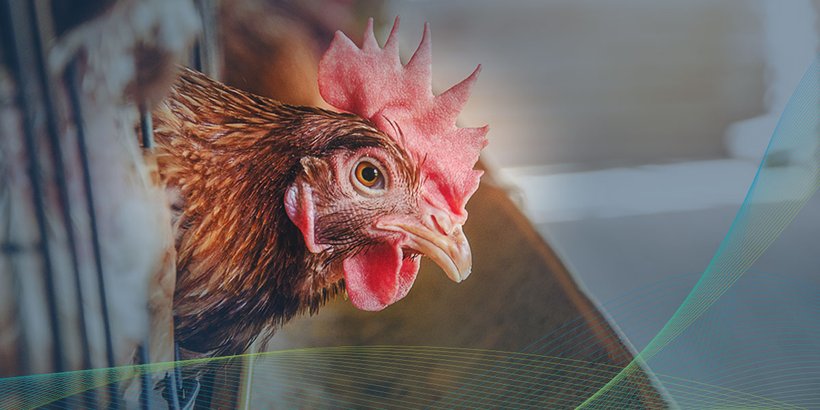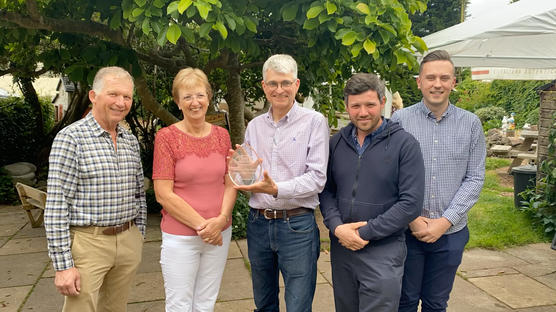
Published on July 3, 2018
Going ‘cage free’ by 2025 - welfare consequences for laying hens
The commitment of the UK’s (remaining) major supermarkets to only sell shell eggs from non-caged birds, from 2025 will have a significant impact on the lives of millions of hens.
Freedom from thirst, hunger and malnutrition
In all systems, thirst, hunger and malnutrition are generally prevented, as poorly or malnourished hens will not lay many eggs! However, competition for feed can still occur. Linear feed troughs must provide 10 cm/hen or more, but the width of a standard brown hen has been estimated at as much as 18 cm, so not all birds can feed together. Subordinate birds are more likely to be displaced from feed troughs than dominant birds and displacements are greater at low feed space allowances (Widowski et al, 2017).
Freedom from pain, injury and disease
Non-cage systems have a greater chance of causing pain, injury and disease compared to cage systems. Keel bone damage is higher in non-cage systems than cages, which is likely to be painful, and has been associated with perches and the height to which birds can ascend to. However, improved perch design reduces the chance of injury, and the provision of ramps in multi-tier systems to allow birds to execute controlled descents has been shown to reduce falls and collisions (Stratmann et al. 2015). Most barn and free-range hens are routinely beak trimmed by infra-red, but organic flocks are not. This method causes short-term pain in laying chicks, however the benefit is that the dulled beak tip helps reduce damage caused by instances of injurious pecking.
Mortality rates are generally higher in non-cage systems than in enriched cages. Disease risks are higher where birds are housed on the floor compared to enriched cages where birds are separated from their faeces. Where birds have access to outdoor runs, there is greater exposure to bacterial, viral, parasitic or fungal pathogens, including avian influenza, Newcastle’s disease and mycoplasma. Red mite infestations are also reported to be worse in free range systems.
Air quality is typically lower in some non-cage systems where manure is not removed but collects beneath slats, and/or because the house is naturally ventilated, causing high ammonia levels. This can lead to respiratory damage and greater risk of respiratory diseases.
Freedom from thermal and physical discomfort
There are greater thermal choices in non-cage systems, because birds can move around a greater footprint, but also vertically. Especially where outdoor access is given, birds can choose to move in and out of different temperature zones, and other climate effects (wind, rain, sun, etc.). All systems provide nest boxes and perches, although interpretation around what these look like vary, but non-cage systems have the advantage over enriched cages of providing litter, which contributes to bird comfort, as long as it is dry and friable.
Freedom from fear and distress
A more diverse environment, as is found with non-cage systems compared to cages, can make hens less reactive to novelty and thus less fearful, however birds in non-cage housing systems are more likely to smother when they do show a fear reaction.
Freedom to perform natural behaviours
Non-cage systems allow hens to express a greater suite of motivated behaviours than enriched cages. They provide more space per hen, and free range and organic systems also provide outdoor runs. Perches can provide a refuge for hens seeking to escape unwanted attention of feather peckers or dominant hens, while also allowing perching and roosting behaviour, especially at night.
Perches increase leg bone strength but the proportion of birds with keel bone damage increases in non-cage housing and with the height that birds can ascend to, suggesting that the freedom of movement comes with risk of injury.
Feather pecking is a problem in all types of hen housing systems, but tends to be worse in non-cage systems. Feather pecking is closely related to foraging motivation, and studies show that if hens are provided with, and use, outdoor runs this can reduce the risk of feather pecking and cannibalism.
Hens are highly motivated to show nesting behaviour. All systems in the UK provide nest boxes of some description, allowing birds to seek a secluded area in which to lay their eggs. Nest boxes are particularly crowded during peak laying times, and favoured nest boxes in non-cage housing (where hens have a choice of multiple nest boxes) can lead to smothering.
Dustbathing behaviour can be expressed in non-cage housing, either in the floor litter or in dirt on the outdoor run. Dustbathing serves to remove stale preen oil from feathers, which keeps the plumulaceous (downy) part of feathers fluffy and thus aids with insulation.
In summary, non-cage housing comes with greater risks to hen welfare, but the scope for greater behavioural freedom is higher also. Decisions on how risks are balanced against bird preferences are somewhat subjective: which bird has the life worth living? Implementing suitable management strategies can reduce risks associated with non-cage housing, such as injurious pecking (Lambton et al. 2013). Therefore, while risks are higher there is also great scope for improvement



